Research
To see my past publications I have led, see my Past Lead Author Publications and Research, below.
Also to see the research I have co-authored, see my google scholar.
See Coding Development for model development, software development, and other projects involved in doing these publications.
Current Research
Constraining aerosol-cloud uncertainties in climate models using machine learning applications and the new NASA PACE and ESA EarthCARE satellite.
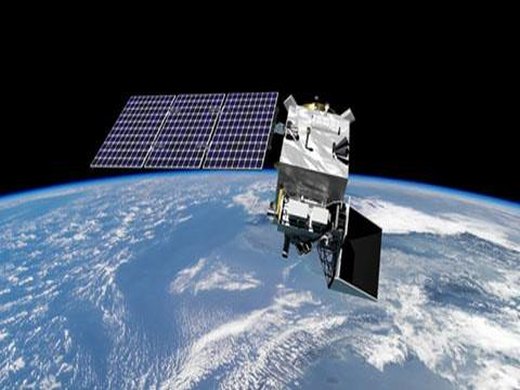
- Aim: Reduce uncertainties in aerosol-cloud interactions using machine learning and next-generation satellite data.
- Methods: Leverage NASA PACE and ESA EarthCARE satellite observations to train machine learning models for improved climate simulations.
Past Lead Author Publications and Research
Quantifying aerosol-cloud interactions using machine learning applications to climate models
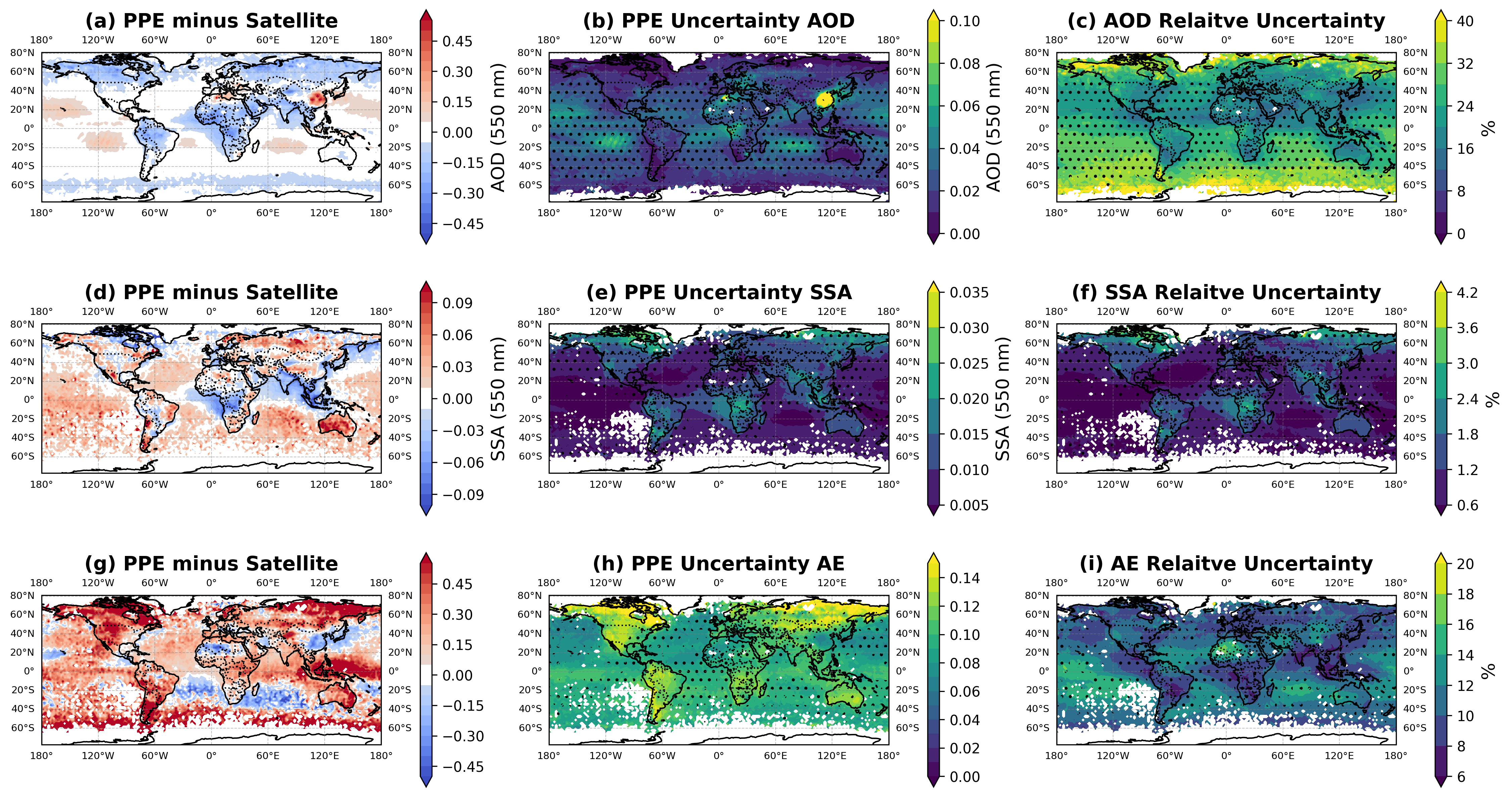
- Aim: Quantify uncertainties in aerosol-cloud interactions and their impact on radiative forcing.
- Methods: Developed a perturbed parameter ensemble (PPE) of 221 simulations in ECHAM6.3-HAM2.3, varying 25 key parameters.
- Regional uncertainties in aerosol parameters contribute to regional uncertainties in aerosol radiative effects.
Status: In preparation
Aerosol and Dimethyl Sulfide Sensitivity to Sulfate Chemistry Schemes
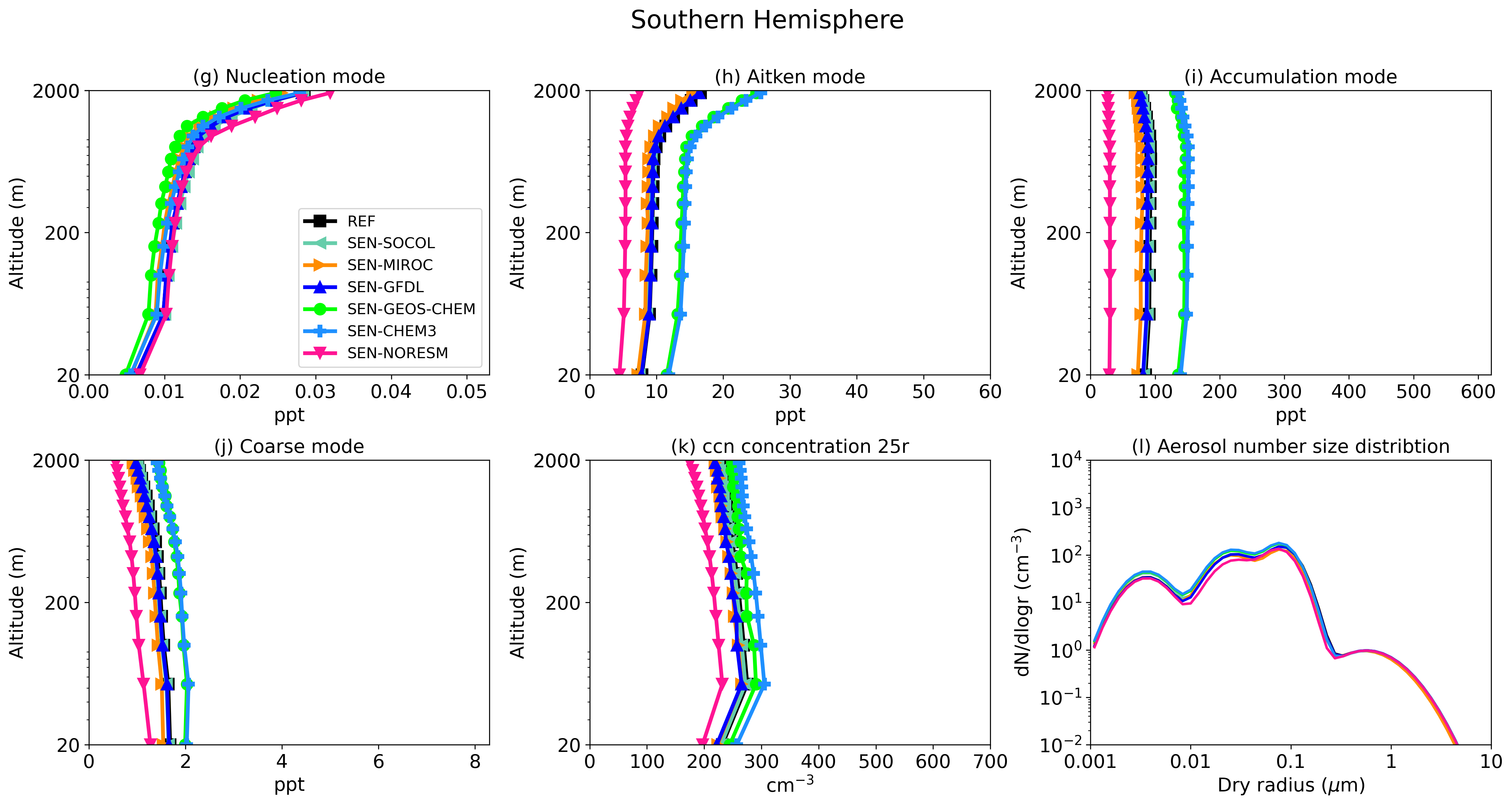
- Aim: Evaluate the sensitivity of sulfate aerosol to DMS oxidation pathways in CMIP6 models.
- Methods: Implemented seven DMS and sulfate chemistry schemes in an atmosphere-only Earth system model.
- The simulated spread in aerosol optical depth and cloud droplet number concentration is more than twice as large as the change from pre-industrial to present-day.
- Constraining the chemistry of atmospheric sulfur is critical to constrain aerosol-cloud interactions.
The sensitivity of Southern Ocean atmospheric dimethyl sulfide (DMS) to modeled oceanic DMS concentrations and emissions

- Aim: Assess the sensitivity of atmospheric DMS to oceanic DMS datasets and transfer velocity parameterizations.
- Methods: Conducted eight 10-year simulations using UKESM1-AMIP, testing four oceanic DMS datasets and three transfer velocity parameterizations.
- The choice of oceanic DMS dataset has a larger influence on atmospheric DMS than the choice of DMS transfer velocity.
- Capturing large-scale spatial variability can be more important than large-scale interannual variability.
Influences of Antarctic Ozone Depletion on Southern Ocean Aerosols
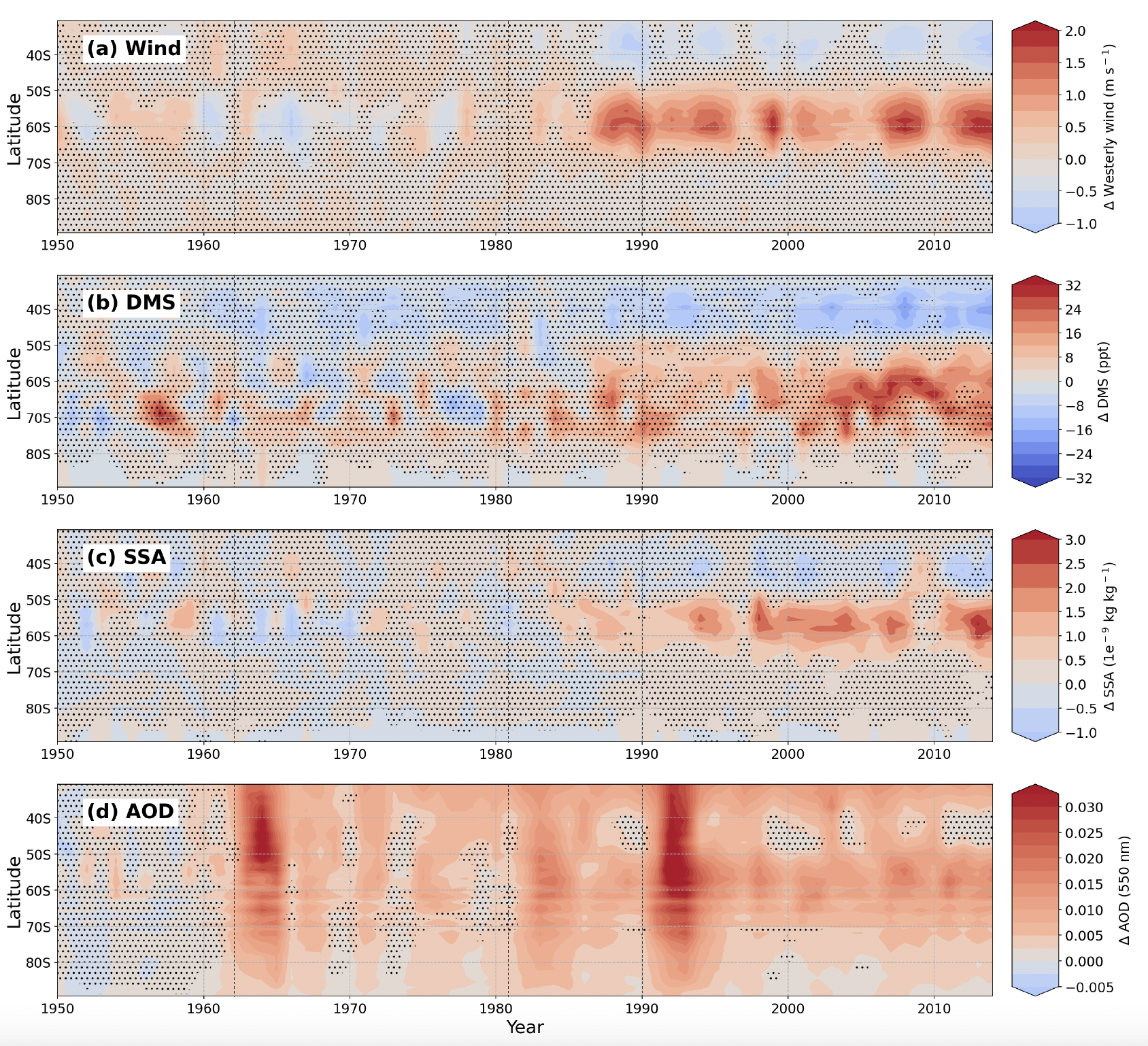
- Aim: Investigate the impact of Antarctic ozone depletion on Southern Ocean aerosols.
- Methods: Analyzed state-of-the-art Earth System Models to evaluate changes in aerosol fluxes and marine biogeochemical activity.
- Wind-driven Southern Ocean aerosol fluxes are influenced by the ozone hole during austral summer.
- Indirect influences of ozone losses mean Southern Ocean aerosols cannot be considered to be representative of pristine conditions.
PhD Thesis in Physics: Southern Ocean dimethyl sulfide and marine aerosol production simulated with an earth system model
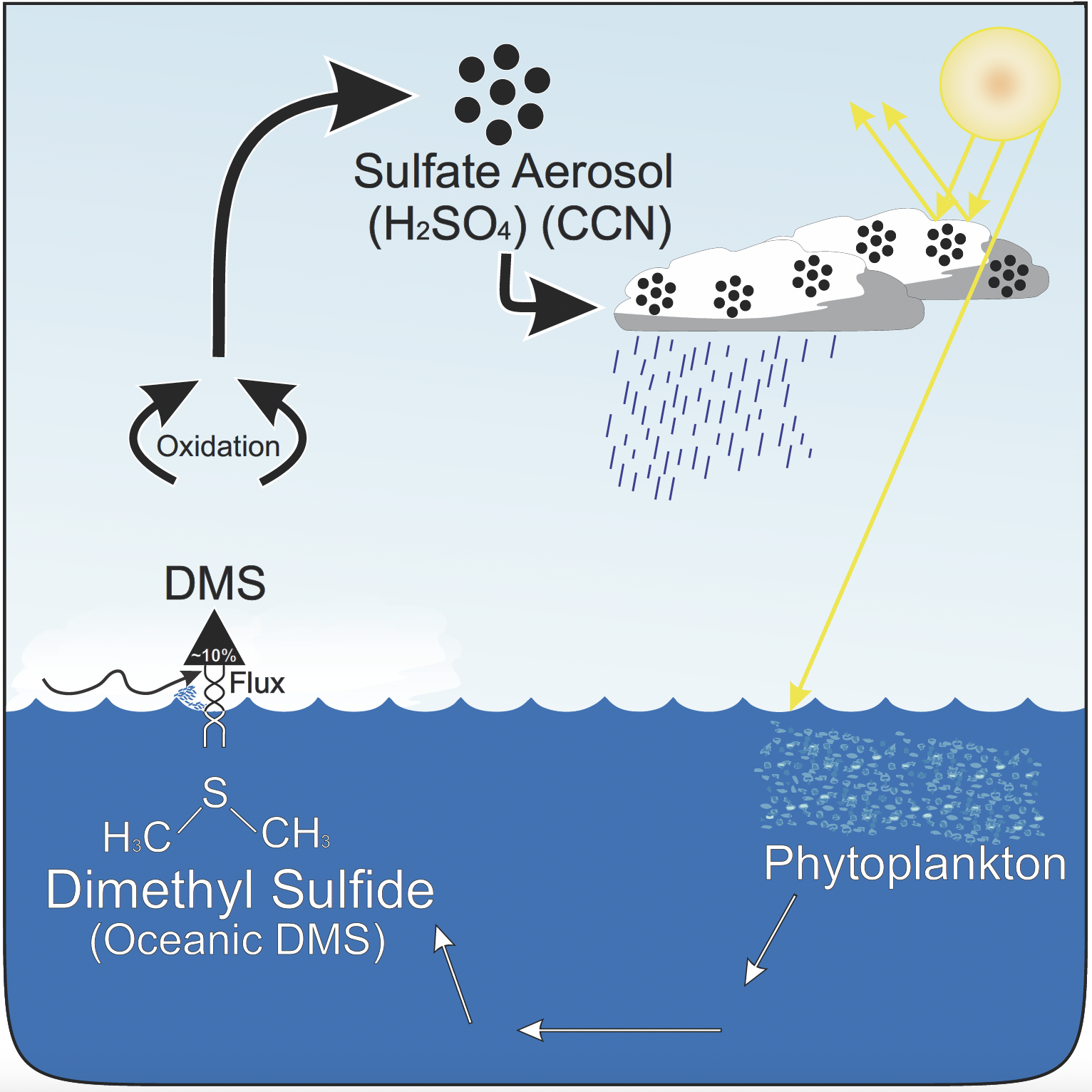
- Aim: Simulate Southern Ocean DMS and marine aerosol production using an Earth System Model.
- Methods: Developed and validated a model framework to simulate DMS emissions and their impact on marine aerosols.